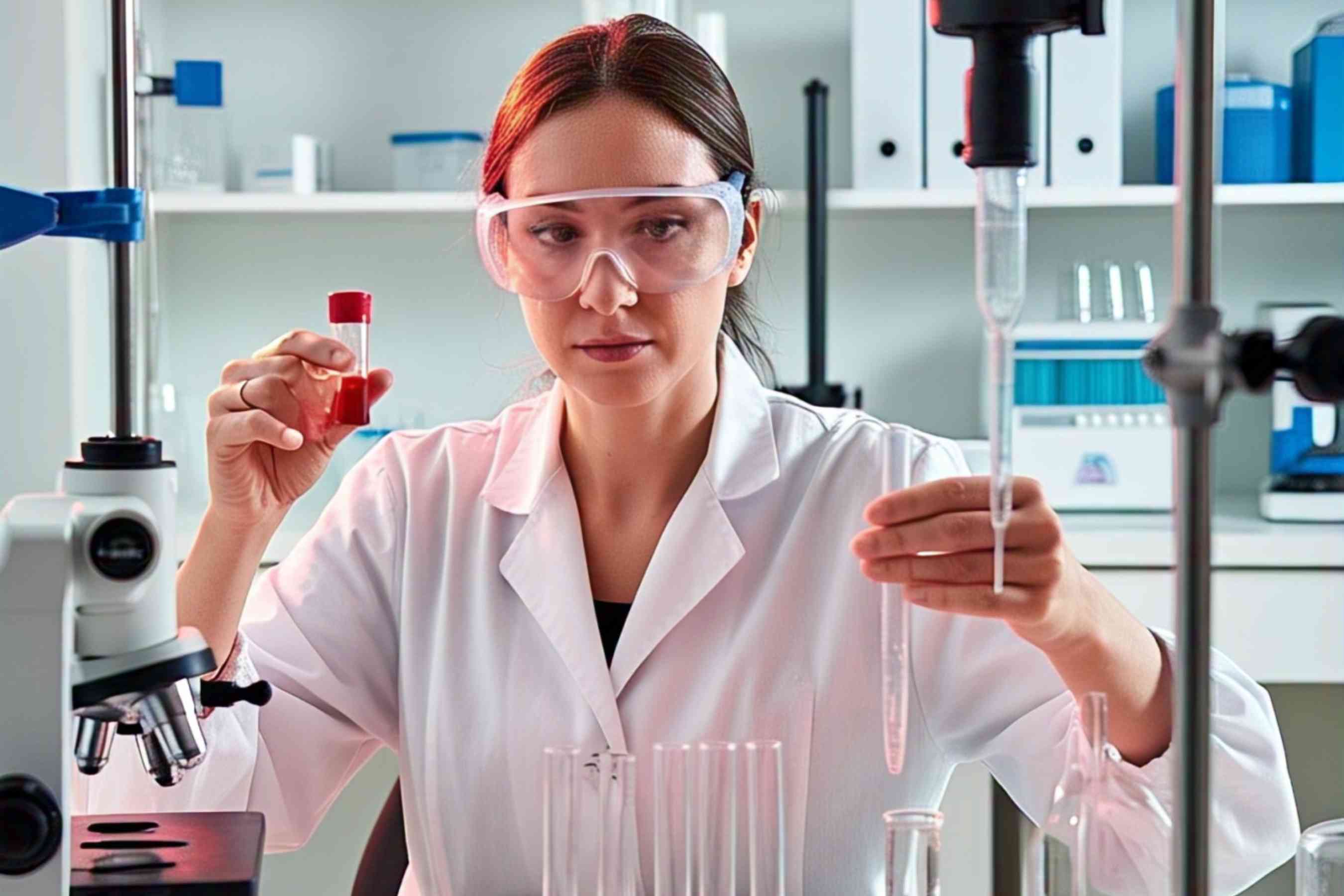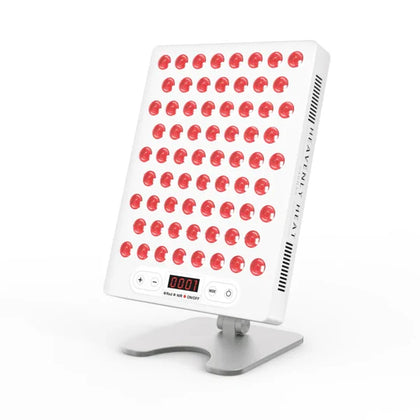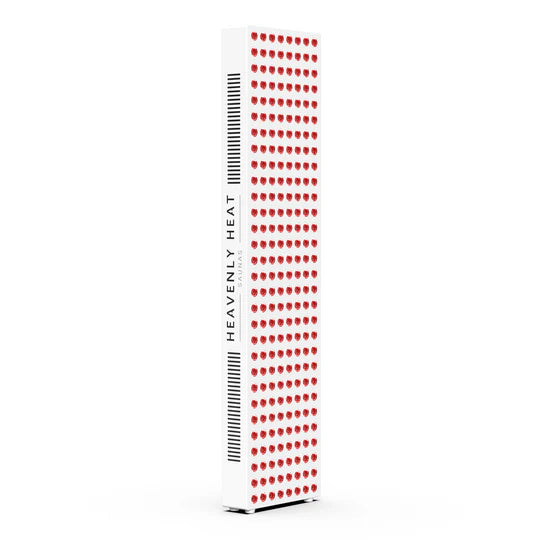Does Red Light Therapy Increase Estrogen?

Struggling with symptoms like breast tenderness, weight gain, and mood swings from high estrogen?
These signs can disrupt your daily life, affecting everything from energy levels to self-esteem.
Ignoring hormonal imbalances can lead to more severe health complications like infertility or even cancer.
But what if red light therapy could help? Keep reading to discover how this treatment might balance your estrogen levels.
Table of contents
Key Takeaways
-
Red light therapy may help balance estrogen by supporting the endocrine system.
-
It can improve ovarian health, blood flow, and possibly fertility in women.
-
While generally safe, women with estrogen-sensitive conditions should consult a healthcare provider before use.
-
Targeting areas like the abdomen and pelvic region can potentially enhance estrogen balance.
-
Complement red light therapy with a healthy lifestyle, including a balanced diet, exercise, and stress management.
What is Estrogen?
The Cleveland Clinic explains that estrogen is a vital sex hormone, mainly associated with female reproductive health, though it plays essential roles in all sexes. It regulates puberty, the menstrual cycle, pregnancy, and menopause, while also influencing mood, bone density, cholesterol, and brain function. Estrogen levels naturally fluctuate throughout life and can signal underlying health concerns when too high or too low.
Several primary causes can lead to estrogen imbalances, including:
Menopause or perimenopause : Natural decline in hormone production with age.
Polycystic ovary syndrome (PCOS) : Hormonal imbalance affecting ovulation and increasing estrogen.
Obesity : Excess fat tissue produces more estrogen.
Certain medications : Hormone therapies and birth control can alter estrogen levels.
Eating disorders or low body fat : May lead to low estrogen due to insufficient hormone production.
Tumors or ovarian disorders : Can cause abnormal hormone production.
Estrogen imbalances may cause fatigue, mood swings, hot flashes, infertility, or irregular periods, impacting daily comfort, mental clarity, and emotional wellbeing.
Thankfully, there are practical ways to manage these issues. Lifestyle changes,like regular exercise, stress reduction, balanced nutrition, and limited alcohol use,can support healthy estrogen levels. In some cases, hormone therapy may be appropriate. With the right care, many people can regain hormonal balance and enjoy better overall health.
Why Hormone Balance—Especially Estrogen—Matters for Women’s Health?
- Estrogen’s Role Throughout a Woman’s Life: Estrogen is one of the main hormones that supports a woman’s body through every stage of life.
- Hormone Balance and Everyday Wellness: When estrogen is balanced, the body runs smoothly, but when it’s too high or too low,
- How Common Are Hormonal Imbalances?: According to statistics, 80% of women experience hormonal imbalances at some point in their lives,
- Estrogen’s Impact on Mental Health: Estrogen also supports mental clarity and emotional well-being,
- Estrogen, Aging, and Cognitive Changes: Studies show that as estrogen levels drop, especially around menopause.
- Bone Health and Menopause: as women approach menopause, falling estrogen levels can lead to faster bone loss,
Can Red Light Therapy Influence Hormone Production?
- How Red Light Therapy Works at the Cellular Level: Red light therapy sends low-level red and near-infrared light into your cells, boosting energy production in the mitochondria—your cell’s power source.
- Energy’s Role in Hormone Balance: This extra energy supports how your body makes and balances hormones.
- Connection with the Endocrine System: Because hormones are regulated by the endocrine system, which controls hormone release from glands like the thyroid and adrenals, red light may help by improving function in these glands.
- ATP: Fuel for Hormone-Producing Cells: By increasing ATP production in hormone-regulating cells, red light gives these cells the fuel they need to work efficiently, helping the body stay in hormonal balance.
- Optimal Wavelengths for Hormonal Support: Specific wavelengths, between 600 to 850 nanometers, seem especially helpful for this purpose.
Can Red Light Therapy Raise Estrogen in Women?
Red light therapy may help balance hormones by supporting the body’s natural processes.
Some research suggests it can improve ovarian function and potentially influence hormone signaling in the brain.
For postmenopausal women or those with low estrogen, this might offer natural relief from symptoms like mood swings, dryness, or fatigue.

Does Red Light Therapy Support Female Fertility?
- Boosts Blood Flow to the Ovaries: Red light therapy may support fertility by stimulating blood flow and enhancing ovarian health.
- Reduces Oxidative Stress for Healthier Eggs: Improved circulation, along with reduced oxidative stress, an imbalance between harmful free radicals and protective antioxidants that can damage cells, works together to promote better egg quality and regular ovulation.
- Enhances Cellular Energy (ATP) for Reproductive Function: By enhancing mitochondrial function, how cells produce energy (ATP) to power essential processes like reproduction, RLT increases energy production within ovarian cells, helping to regulate hormonal balance and creating a more favorable environment for egg development.
- Delivers Oxygen and Nutrients to Support Ovarian Health: As blood flow improves, more oxygen and essential nutrients reach the ovaries, further supporting reproductive health and function.
- Complements Natural Hormonal Rhythms for Conception: For women trying to conceive, this safe, non-invasive therapy complements the body’s natural hormonal rhythm, offering a gentle yet effective way to boost fertility.
Is Red Light Therapy Safe for Women with Estrogen-Sensitive Conditions?
- Why Caution Is Needed: Red light therapy offers benefits, but for women with estrogen-sensitive conditions, like breast cancer, fibroids, or endometriosis, caution is necessary.
- Understanding Estrogen-Sensitive Conditions: Estrogen-sensitive conditions are disorders where estrogen can exacerbate symptoms or contribute to disease progression, such as in breast cancer or fibroids.
- Hormone Receptors and Breast Cancer: Around 60 percent of women suffering from breast cancer are estrogen-positive or progesterone-positive. This clearly indicates the cancer cells have receptors for the female hormones estrogen and progesterone.
- Estrogen’s Role in Tumor Growth: Therefore, this can certainly fuel the growth of malignant tumours, says Dr Suhasini Inamdar. It’s important to note that approximately 70% of breast cancers are estrogen receptor-positive, highlighting the strong link between estrogen and these conditions.
- Potential Risks of Red Light Therapy: Although some studies suggest it's generally safe, overuse may potentially disrupt hormonal balance, and there could be risks for women with these conditions.
- Potential Benefits with Caution: While it can support blood flow, ovarian health, and improve egg quality, it is essential to consult a healthcare provider before starting treatment, especially for those with estrogen-sensitive conditions.
Pros |
Cons |
| Non-invasive, safe option for hormonal support | Potential risk for women with estrogen-sensitive conditions |
| Supports blood flow and ovarian health | Overuse may disrupt hormonal balance |
| May enhance fertility by improving egg quality | Consultation with a healthcare provider required for those with conditions like breast cancer |
Where Should Red Light Therapy Be Applied to Affect Estrogen?
For potential estrogen support, apply red light therapy to areas like the abdomen, ovaries, and pelvic region.
These areas are directly involved in hormone regulation and reproductive health.
Targeting them may promote better hormone balance by stimulating the endocrine system.
Is Full-Body Red Light Therapy More Effective for Hormonal Balance?
- Whole-Body Cellular Activation: Full-body red light therapy offers a more comprehensive approach by activating cellular functions across the entire body.
- Endocrine System & Hormone Regulation: It helps support the endocrine system, regulate hormones like estrogen and cortisol, and improve circulation.
- Targeting Widespread Hormonal Imbalances: This approach can be particularly effective for individuals experiencing widespread hormonal imbalances, such as those related to menopause, thyroid disorders, or chronic stress,
- Promotes Overall Hormonal Harmony: it encourages a more balanced and harmonious hormonal response throughout the body.
- Potential for Noticeable Improvements: This broader stimulation may lead to more noticeable improvements in hormonal balance and cycle regulation.

Natural Ways to Support Estrogen Alongside Red Light Therapy
Incorporating Phytoestrogens in Your Diet
Phytoestrogens are plant compounds that mimic estrogen in the body and may help balance hormone levels.
Foods like soybeans, flaxseeds, chickpeas, lentils, and sesame seeds are rich in them.
These foods are especially helpful during menopause and can reduce symptoms like hot flashes.
Red Light Therapy for Hormonal Balance
- Supports the Endocrine System: While red light therapy doesn’t directly raise or lower estrogen, it supports the endocrine system and helps alleviate symptoms like mood swings or irregular cycles.
- Encourages Natural Hormonal Balance: By naturally promoting hormonal balance, RLT may reduce the reliance on hormone replacement therapy (HRT) for some women,
- Enhances Supplement Absorption: It also boosts the effectiveness of supplements by improving circulation and cellular function,
- Complements a Holistic Lifestyle: These benefits make red light therapy a powerful complement to a healthy lifestyle aimed at supporting hormonal well-being.
Herbal Supplements to Enhance Estrogen Production
- Common Estrogen-Supporting Herbs: Herbs like black cohosh, red clover, dong quai, maca root, and chasteberry may naturally support estrogen levels by interacting with hormone receptors or promoting hormone synthesis.
- Possible Side Effects to Watch For: While these herbs can be effective, it's important to note that black cohosh, for example, may cause mild side effects like stomach upset, headaches, or, in some cases, liver issues with prolonged use.
- Caution for Certain Health Conditions: Those with hormone-sensitive conditions or on certain medications should also be cautious.
- A Natural Alternative to HRT: These herbs are popular alternatives to hormone replacement therapy, especially during menopause—but always consult your doctor first.
Maintaining a Healthy Weight
- Body Fat and Estrogen Connection: Body fat plays a significant role in estrogen production, with too much or too little disrupting the balance.
- Hormonal Shifts During Menopause: Throughout a woman’s life, especially during menopause, estrogen levels fluctuate, affecting how the body stores fat.
- Lower Estrogen and Belly Fat: As estrogen decreases, women often experience increased abdominal fat and changes in metabolism, which can lead to higher cardiovascular risk.
- Core Habits for Weight Balance: A healthy diet, regular exercise, and good sleep are key to maintaining a balanced weight.
- Role of Red Light Therapy in Weight Management: Red light therapy may also support weight management by reducing inflammation and boosting metabolism.
Regular Exercise to Promote Estrogen
- Exercise Supports Hormone Balance: Exercise helps maintain hormone balance.
- Cardio for Hormone Production & Stress Relief: Cardio workouts support hormone production and reduce stress,
- Strength Training & Yoga for Estrogen Support: strength training and yoga regulate body fat and lower cortisol.
- Consistency Over Intensity: A consistent routine, not intensity, is most effective.
- Moderate Exercise Boosts Hormonal Health: Moderate-intensity exercises, like resistance training and cardio, have been shown to support better hormone regulation.
- High-Intensity Without Recovery Can Lower Estrogen: high-intensity exercise without adequate recovery and nutrition may actually lower estrogen levels.
Managing Stress Levels
- The Impact of Chronic Stress on Hormones: Chronic stress raises cortisol, which competes with estrogen.
- Stress-Reducing Activities: meditation, deep breathing, and time in nature help manage stress,
- The Importance of Sleep in Hormone Regulation: sleep plays a key role in regulating hormones, including estrogen and cortisol.
- Red Light Therapy’s Role in Stress Management: Red light therapy can further support this balance by calming the nervous system, reducing cortisol levels, and promoting a more harmonious relationship between cortisol and estrogen.
Incorporating Healthy Fats
Healthy fats help your body produce estrogen. Include sources like avocados, olive oil, nuts, seeds, and fatty fish.
These fats also enhance vitamin absorption, which supports hormonal health. Eating good fats before or after red light sessions may improve therapy results.
Summary
By combining red light therapy with natural approaches like a healthy diet, exercise, stress management, and herbal support, you can help your body balance estrogen levels. These methods work together to support your hormones and overall well-being in a gentle, natural way.

Other Therapies that help with Estrogen
Phytoestrogen-Rich Diet
Eating a phytoestrogen-rich diet is one simple way to support healthy estrogen levels. Foods like soy, chickpeas, and other legumes contain natural plant compounds that act like estrogen in the body.
They gently connect with estrogen receptors and help balance your hormones depending on what your body needs.
According to the National Library of Medicine , some studies show these foods may improve blood sugar, support heart health, and even help with hormone changes in women after menopause. While results can vary, adding these foods may give your body a natural hormone boost.
Herbal supplements
Herbal supplements work with your body to support healthy estrogen levels in a natural way. Some herbs like pine bark, linseed, and maca help ease hot flashes and other menopause symptoms by gently boosting how your body uses estrogen.
According to the National Library of Medicine , these herbs may even help lower long-term health risks linked to low estrogen.
FAQs
Is It Dangerous If Red Light Therapy Increases Estrogen?
There’s no definitive evidence that red light therapy causes estrogen-related cancers. However, if you have estrogen-sensitive conditions, consult your doctor before use. Prolonged overuse could disrupt hormonal balance, so moderation is important.
What Hormones Are Affected by Red Light Therapy?
Red light therapy may affect estrogen, testosterone, thyroid hormones, and cortisol. It boosts cellular energy, reduces stress, and supports hormonal regulation, contributing to better hormonal balance.
What Device Settings Are Best for Hormonal Support?
For hormone-related support, use wavelengths of 660–850nm at a moderate intensity (10–50mW/cm²) for 10–15 minutes per session. Avoid high-intensity exposure, especially for sensitive individuals. Consistency is key.
Can Red Light Therapy Increase Estrogen Through Facial Application?
Red light therapy on the face may boost circulation, activate estrogen receptors, and improve skin elasticity and hormonal acne. It’s a natural, non-invasive method for enhancing skin health and hormonal balance.













































